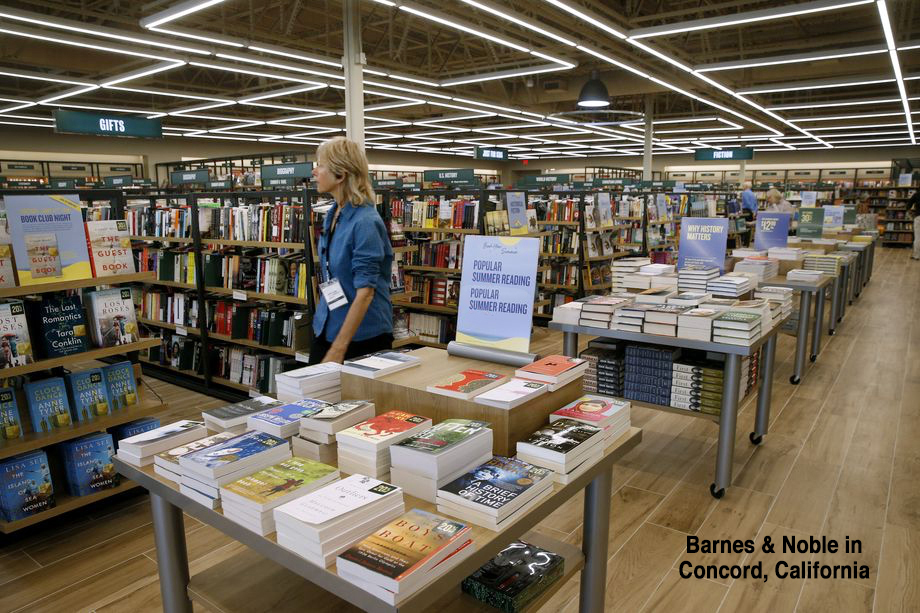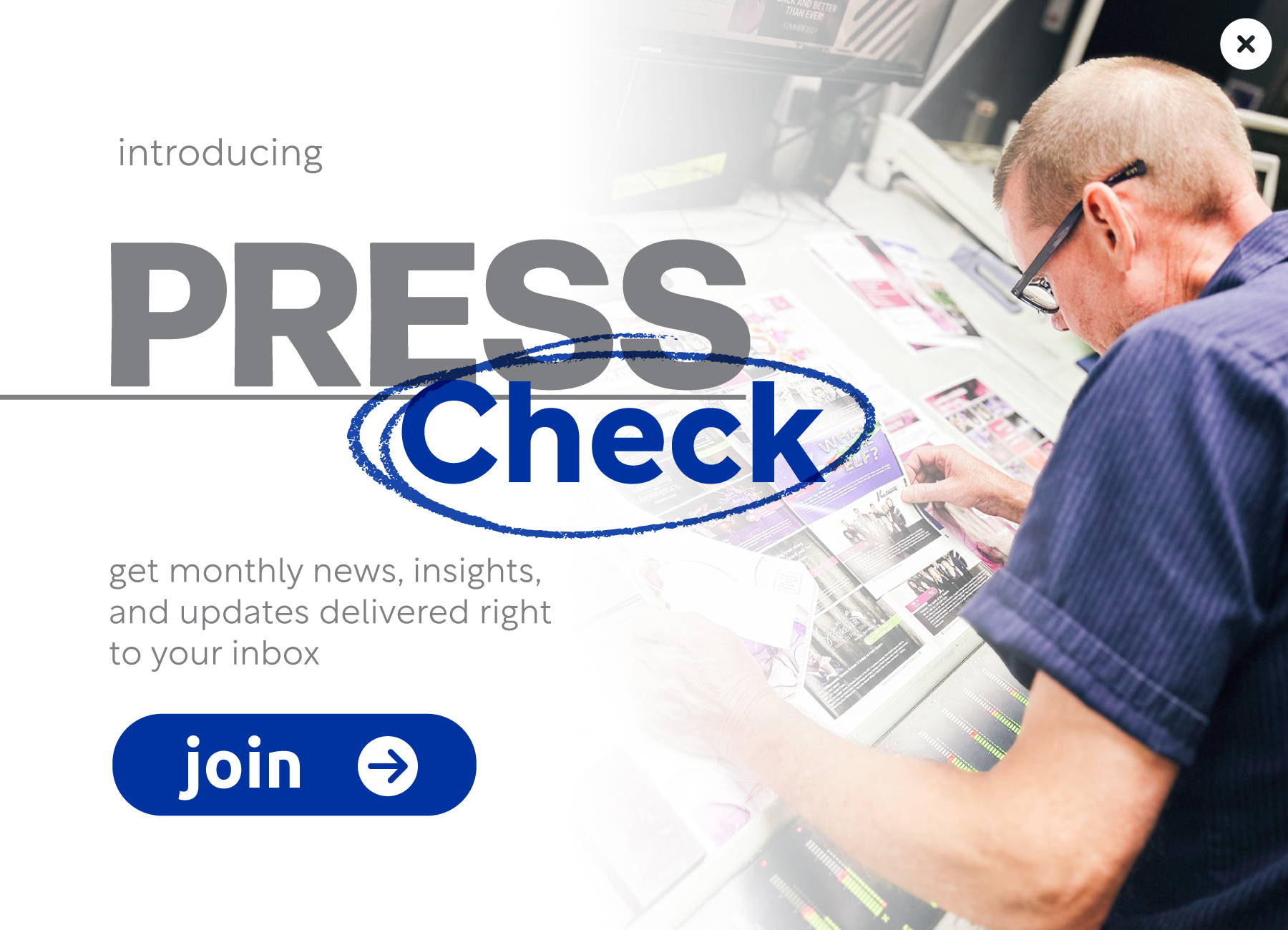The supply chain and publication printers
If there’s a particular book you’ve got your eye on for the holidays, it’s best to order it now. The problems with the supply chain are impacting book publication printers too.
“Think of the inputs that go into a book,” says Matt Baehr, executive director of the Book Manufacturers’ Institute. “There’s paper, there’s ink, and there’s getting the book from point A to point B. All of those things are affected.”
The ongoing COVID-19 pandemic has been exacerbating existing problems in the global supply chain for nearly two years now. Add to that pressure a global labor shortage, a paper shortage, the consolidation of the American printing industry, and an increased demand for books from bored stay-at-homers across the US, and you’re faced with what Baehr says is a “perfect storm” of factors to create what some observers are calling a book shortage.
However, that doesn’t mean holiday book shoppers will be faced with empty shelves at their local bookstore come December, cautions Barnes & Noble CEO James Daunt. “There is no book shortage as such at the moment because the nature of the publishing cycle is that these books are planned many months ahead,” Daunt says.
Most of this fall’s major releases have already been printed or have their printing runs scheduled, and any delays to those scheduled print runs are expected to be minimal. Still, some titles have seen their publication dates bumped by weeks or even months. Of those, some now won’t reach shelves until next year.
The place where readers are most likely to find themselves in a crunch, though, is with surprise bestsellers. Every year, there are books that do much better than either publishers or booksellers expected them to and sell out their initial print runs. Normally when that happens, booksellers immediately order more books, and publishers are able to print those books and ship them out rapidly. In 2021, that’s going to be a lot more difficult. If a publisher unexpectedly sells out of a book early, it may not be able to send new copies to bookstores until well into 2022.
So if there’s a book you’ve got your heart set on reading in print this fall, now is the time to preorder. Otherwise, you might find your heart broken in December.
Here are the major issues leading up to the great book shortage (or, if we are being as pedantic as James Daunt would like, the surprise bestseller shortage) of 2021.
More people are reading books
According to industry tracker NPD Bookscan, printed book sales have increased 13.2 percent from 2020 to 2021, and 21 percent from 2019 to 2021.
“Usually a good year means going up maybe 3 or 4 percent,” says NPD books analyst Kristen McLean. “The growth that we saw last year and this year is pretty unprecedented.”
McLean says it’s clear that the pandemic is what’s driving the growth in book sales, in part because of what kind of books are selling well and which aren’t. As global lockdowns began in March of 2020, sales of traditionally high-performing categories like self-help books and business books plummeted, while sales of educational books for home-bound kids and first aid books for emergency preppers took off.
Since then, McClean says, book sales have tracked closely to the trends of the quarantine era: a lot of bread books early on, a lot of books on social justice and race in the summer of 2020 during the George Floyd protests, and books on politics during the presidential election season. Then, after the election, sales of adult fiction began to really take off — a trend McLean pointed to as telling.
“That’s one of the things I look at really closely,” McLean says. “When someone buys a nonfiction book, that could be because it’s a reference book, or because they want to understand something that they’ve heard. But when someone buys an adult fiction book, generally that’s for pleasure reading. So that is a good leading indicator that people are really engaging with books.”
Reading is one of the hobbies that people have started to pick up over the course of the pandemic. And overwhelmingly, they’re reading printed books, not ebooks.
“Ebook sales did go up last summer,” McLean allows, noting that many of the social justice titles of the summer, such as Ibram Kendi’s How to Be an Antiracist, rapidly sold out in print, driving readers to ebooks for their immediacy. Generally, however, ebooks are holding steady at just 20 percent of the US market.
“There’s just more people who want to read and prefer reading print,” McLean says.
Most years, the news that more people are reading books would be treated as an unalloyed positive. This year, the increased demand for books is colliding head-on with some major problems throughout the rest of the publishing industry.
It’s getting more complicated (and expensive) for publication printers to physically make books
Paper, ink, and printing presses are all at a premium right now. There’s not enough of any of them, and what we do have costs a lot.
The paper shortage begins with the wood pulp shortage. According to a report from the printing company Sheridan, the price of wood pulp rose from $700–$750 per metric ton in 2020 to almost $1,200 per metric ton in 2021. Sheridan cites an environmental initiative in China that shut down 279 pulp and paper mills as one of the major drivers behind the spike in pricing, as well as a global backlash against plastic and the rush to replace plastic products with paper alternatives.
Meanwhile, with shoppers increasingly ordering products online, the price of cardboard in which to ship goods has gone up with demand. So paper factories have begun to invest more in producing cardboard, shifting their resources away from making book-grade paper in the process.
“You have a combination of both fewer mills producing book paper and greater demand for wood pulp elsewhere, so that there is both a price and availability issue,” explains Brian O’Leary, executive director of the Book Industry Study Group.
A shortage of raw materials is also wreaking havoc in the inks market. According to a report by the Business Research Company, the same Chinese environmental initiative that led to a shortage of wood pulp has also led to decreased availability of resins, monomers, photo initiators, oligomers, and additives. Moreover, ink manufacturers are rapidly consolidating. All of these issues combined means ink prices are steadily rising.
Printing presses, meanwhile, are scrambling. The cause dates back more than a decade. In 2008, presses faced what appeared to be an existential crisis: the Great Recession on the one hand and the advent of the Amazon Kindle ebook reader on the other. Many in the industry predicted that printed books would soon be obsolete, and companies began to de-invest in printing books.
Instead, demand for print books has steadily climbed after a drop in 2008, and publication printers have not kept up.
RELATED
The 2010s were supposed to bring the ebook revolution. It never quite came.
Most publication printing happens in the US. Books with heavy color printing, like picture books, are sent to China, but in order to keep the cost of shipping low, most publishers do the rest of their printing domestically. That’s getting more and more difficult to manage.
Until 2018, there were three major printing presses in the US. Then one of them, the 125-year-old company Edwards Brothers Malloy, closed. The remaining big two, Quad and LSC, attempted to merge in 2020, but then the Justice Department filed an antitrust lawsuit. Quad responded by getting out of the book business entirely; LSC filed for bankruptcy and sold off a number of its presses. Smaller publication printers have continued to operate, but the infrastructure to keep up with the demand for printed books in North America is in shambles.
So if demand is up, why are so many publication printers shutting down?
Part of the issue is that publication printers find themselves squeezed by Amazon in both directions. As a major book buyer, Amazon has a lot of leverage to negotiate on price, allowing it to purchase its books from publishers at very low cost. Publishers pass the resulting losses along to their publication printers. Following the rules of capitalism, printing presses would like to pass the loss along to their workers in turn — but in the rural distribution regions where most of these presses operate, the other major employer is Amazon warehouses. And Amazon has set the floor for wages at $15 per hour.
“I don’t necessarily think this is a bad thing,” O’Leary says. “But you’re competing for labor.”
The labor shortage also means that even when printers raise their wages, they don’t have anyone to hire. The industry is chronically understaffed. “Printers, binders, the true book manufacturers, they could all hire an additional 10 to 20 percent of their current workforce without even batting an eye,” says Baehr.
Meanwhile, very few new players are entering the game. Part of the reason is that it costs a lot of money upfront to enter the industry. “It’s a capital-intensive business, printing,” says O’Leary. “You have to spend from several million to more than $10 million on a printing press, and you generally amortize that over a long period of time.”
So right now, publishers and publication printers have to pay more for the paper that makes up any given book, more for the ink that prints the words in the book, more for the time at a publication printer to get the book printed, and more for the labor to staff the press to get the book produced.
Then come the problems with shipping.
It’s getting harder to ship books
Right now, distribution networks across the world are massively congested, including the postal service.
“Los Angeles — which is a major port of entry for the United States — New York, and New Jersey are all pretty full up,” says O’Leary. “We’re hearing reports of delays of weeks for getting things cleared.”
“Containers are not moving out of ports and onto trains quickly enough,” explains Chris Tang, a UCLA business professor specializing in global supply chain management. “And on top of that, all of the warehouses in the Midwest are full. So everything is stuck.”
An increase in online shipping in part of what’s driving the congestion. Meanwhile, the complications of Brexit and the internet’s beloved container ship Ever Given — both of which dramatically disrupted global supply chains — certainly aren’t helping ports empty themselves out faster.
Even more pressing, however, is a shortage of truck drivers. There just aren’t enough trucks on the road to pick up as much stuff as we’re currently shipping around the world. “We’re talking tens of thousands fewer truck drivers than we need,” says O’Leary.
And as stuff sits in warehouses, waiting to be picked up by increasingly scarce truck drivers, the price of storage goes up, adding to overall shipping costs. “It used to be around $3,000 per container,” Tang says. “Now the price is closer to $20,000.” The skyrocketing costs mean that companies selling luxury goods will take more warehouse slots, since they can afford them, while lower-priced goods, like books, compete for what’s left.
Barnes & Noble CEO Daunt notes that books do have one big advantage over other goods when it comes to shipping: They’re durable. “The reality is that books are fantastic because they don’t really perish, so you’re able to print lots of them in advance,” he says. “They’re incredibly robust, so you can send them through the most basic of supply chain routes. They’re not strawberries or peaches or delicate things.”
But right now, even the most basic of supply chain routes are finding themselves overwhelmed.
Underlying all these issues is the increasingly dire labor shortage
One of the big underlying problems when it comes to publication printers and shipping books is the same labor shortage that’s currently roiling the rest of the country. There aren’t enough press operators to get books printed, and then there aren’t enough truck drivers to get them to bookstores. Wages have gone up, but there still aren’t enough people working.
“In the whole national workforce, you’ve got 8.4 million unemployed but 10.9 million open jobs,” says Baehr. “That’s a two and a half million-person shortage, period, and that’s across all buckets. The book industry is getting hit with that just as much as the paper industry is getting hit with that just as much as the transportation industry is getting hit with that. It all just compounds on itself. It’s just a rough spot right now for the book business.”
“Simply put, the working-age population in the US has stopped growing,” says Gad Levanon, founder of the Labor Market Institute. “And the working-age population without a BA is shrinking quite rapidly.” That’s a major issue for the industries we’re discussing here because in general, people with college degrees prefer not to work in warehouses, as truck drivers, or in printing presses.
The pandemic has only exacerbated this issue. As COVID-19 spread, many people preferred not to work in the close quarters of a factory or warehouse, or in a job that required as much in-person interaction as making deliveries. They were also likely to want to stay home to care for their now home-bound children. For a while, enhanced unemployment benefits meant that it was even financially possible for people to do so. Some older workers simply retired early.
Levanon expects the labor force to increase slightly this fall as enhanced unemployment benefits expire and children return to in-person school. But he says that in the long term, the US labor force will continue to shrink for the next decade.
Where do we go from here?
So should we all be worried about the long-term destruction of our book-producing ecosystem?
Yes and no.
Chris Tang projects that shipping congestion will ease in early 2022, after Chinese New Year. “Demand will come back down after the holiday season,” he says. “In Asia they do a big push to produce everything before the Chinese New Year because that’s when all the factories will close for one month. So in that case, after that they will clear the old backlog.”
In the long term, it’s likely that as current agreements between printers and publishers expire, the printers will begin to charge publishers more for their services to better manage the rising costs of paper, ink, and labor. At that point, book prices will likely go up. No one is entirely certain what that increase will do to the book retail market, but it’s unlikely that demand will keep scaling up indefinitely.
“I think it would be very hard for 2022 to match what we’ve done this year and last year, just because it’s so unusually high,” says Kristen McLean. “But these days you can never be sure, right? It’s been such a roller coaster for us that the market could surprise me again.”
Levanon argues that to end its labor shortage, the US will need to do more than raise wages. “Before the pandemic, when there was also a shortage, we saw a large increase in the labor force participation of demographic groups that are less connected to the labor market,” he says. “The best example was Latina women. Their labor force participation increased dramatically. So attracting more people from groups that are less connected to the labor market and increasing immigration would help.”
Increased automation is another possible way to ease the labor crunch, and some tech groups are hopeful that automation could solve the truck driver shortage on its own. But automation comes with its own problems. “Putting 40 thousand pounds worth of books on an automated truck and hoping they get to New York without killing somebody?” says O’Leary. “Not a big fan.”
“If it was easier to automate the job,” Levanon agrees, “they probably would have done it already.”
This holiday season, bookstores will be able to mostly fill their orders. However, O’Leary warns, “you might see that there’s a hair cut across the top.” Publishers may only be able to print, say, 70 percent of the copies they’d like to print of any given book, and in that case they’d only sell booksellers 70 percent of their ideal order.
“If you really want a book, order it early or buy it early if you can,” says O’Leary. “Because if it gets hot, it’s going to be hard to replace.”
Daunt suggests not getting too attached to any particular title, noting that on the whole, there are still more than enough books to go around. “The thing for bookshops is, we’re amped for books,” he says. “So if we don’t have one book for you, we’ve definitely got plenty of other alternatives to suggest.”



